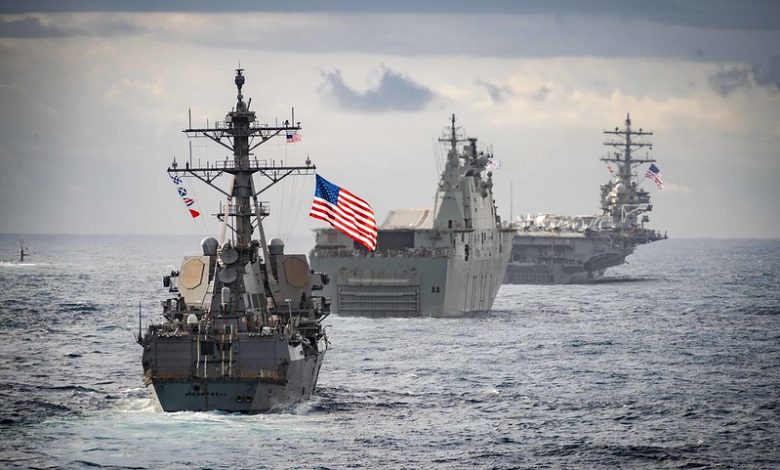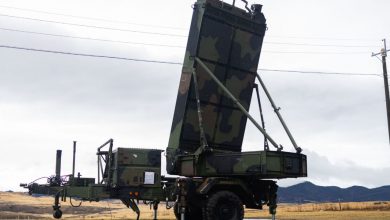Analysis: US’ new security strategy on Indo-Pacific

A ‘free and open’ Indo-Pacific is the new mantra of the Biden administration and it has found a place in the U.S. National Security Strategy as a key plank, in addition to the Russia and China chapters, which were mentioned in my previous articles
Even a cursory appraisal of the National Security Strategy (NSS) would reveal that American policymakers are currently too obsessed with the “China threat.” There is hardly any topic in the 48-page document where they have forgotten to directly or indirectly refer to the People’s Republic of China (PRC) – as they now prefer to call China in the official documentation. “Free and open Indo-Pacific” is the new mantra of the Biden administration, and it has been assigned a separate chapter in the NSS document as a key plank of America’s global strategic outlook.
Indubitably, this long stretch of area, starting from the East China Sea including the Indian Ocean and extending up to the islands in the vicinity of Australia, has acquired inordinate strategic significance for global power brokers in recently. “The Indo-Pacific fuels much of the world’s economic growth and will be the epicenter of 21st-century geopolitics. And we will affirm freedom of the seas and build shared regional support for open access to South China Sea – a throughway for nearly two-thirds of global maritime trade and a quarter of all global trade. A free and open Indo-Pacific can only be achieved if we build collective capacity,” is how the NSS has described the significance of this region.
Not surprisingly, in this region, the United States considers China as the main rival, which is aggressively busy in extending influence here. The NSS divides the region into two distinct parts on the basis of geographical demarcation: Firstly, the area comprising the East China Sea and the South China Sea up to the Indian Ocean, and secondly, numerous Pacific island states around Australia. In both parts of the Indo-Pacific, security issues vary in nature. However, China is the only common factor that has been categorized as the key challenger to American interests there.
Owing to these geographical compulsions, two parallel tussles between Beijing and Washington are being witnessed in the Indo-Pacific region. In the East China Sea and the South China Sea, tensions between Japan and China over the Senkaku islands, as well as the Taiwan Strait are very much dominant. But there are a lot of other factors along with the two simmering hot spots that have been compelling the United States to encircle China in this region. China has been using the Belt and Road Initiative (BRI), with tentacles spreading to the entire region, and sprouting military outposts on different islands to give the impression of a highly aggressive buildup.
On the other hand, the U.S. has been pushing hard to ensure its physical presence in this highly strategic area through different military and economic alliances with its allies. These alliances and regional multi-lateral security agreements, under the auspices of the United States, are on the rise. The American policymakers believe that, as evidenced by the content of the NSS, engagement with regional players is key to muffling China’s aggressive designs in the region.
“We are deepening our five regional treaty alliances and closest partnerships. We affirm the centrality of ASEAN and seek deeper bonds with Southeast Asian partners. We will expand our regional diplomatic, development, and economic engagement,” stated the NSS chapter on the Indo-Pacific region.
The impatient American approach is quite justified considering China’s unabated efforts to consolidate its position in the Indo-Pacific. The list of Pentagon-backed alliances and regional agreements is quite long: the Quadrilateral Security Dialogue (QUAD), the UKUSA Agreement, Five Eye, the Indo-Pacific Framework, and Indo-Pacific Armies Management seminars being among them.
The strategic American intent is quite clear: Halt China’s belligerent advances through increased regional security engagements. But, when compared with the Chinese approach of investing heavily in infrastructure development and economic activities, the American strategy appears to be much more flawed. With the exception of the Asia Pacific Economic Cooperation (APEC), there is no tangible involvement of the United States to uplift the infrastructure and economic health of its regional partners. Washington has been quite successful in instilling the “fear of China” among its associates in the region, but it has not offered anything concrete to counter the generous spending by Beijing to continuously expand the BRI and support economic activities.
Biden’s absence raises questions
The absence of U.S. President Joe Biden at last month’s APEC summit in Bangkok, where Vice President Kamala Harris played the role of his proxy, has raised doubts about U.S. sincerity concerning “deep engagement” with this region. The main thrust of the American strategy is a pretext to increase its military presence in the region. Whether it is North Korea’s unconventional missile test flights or rising tensions over the Taiwan Strait, the Pentagon has only one solution: Initiate joint military exercises in the vicinity of the hot spot and launch a new security agreement with regional players.
Long-term engagement, without infrastructure development and economic cooperation, appears nowhere, and only empty political rhetoric, to keep the fire alive in the anti-China camp in the region, is observed. But this rhetoric will soon lose steam if the United States does not address this major fault in strategy. The same mistake is being made in the case of the Pacific islands – another portion of the Indo-Pacific where the Americans are quite wary of the increasing Chinese presence.
For quite a long time, the Chinese have been actively engaged with the Pacific island nations in different trading and economic projects. In 2006, when the first China-Pacific Island Countries Economic Development and Cooperation Forum was arranged in Fiji, China invested more than $1.78 billion in aid to eight countries in the region and is the region’s second-largest trading partner with diplomatic ties with all countries. Even some Western political analysts have started using the term “China-Pacific-Islands bloc” to snobbishly describe the sphere of Chinese influence in the Pacific region. The root cause of the recent unusual surge in the anti-China hype by Americans with regard to the Pacific islands can easily be traced to the frustration over their diplomatic failures to entice these island states away from China.
Similarly, Australia, the closest American ally in the region that is also its active partner in two important regional security groups – AUKUS and QUAD – is trying its best to help Washington in winning this region, diplomatically of course. Penny Wong, Australia’s foreign minister, ever since she took charge of her ministry in May this year, has so far paid three urgent visits to neighbor islands in the Pacific. It seems, the new Albanese regime in Australia, just like the previous Morrison administration, is already quite “suspicious” of China’s intentions behind its increased physical presence in the Asia Pacific through infrastructure developments in different island states in Australia’s vicinity.
Self-proclaimed big brother role
The U.S., assuming the self-proclaimed role of a big brother, is flexing its muscle to outcompete China in this region. Washington is using a three-pronged strategy to achieve this. Apart from using the “China threat” to create new security groups in the region – in the same pattern as AUKUS and QUAD – the U.S. is igniting the fear factor to entice the tiny island states. Secondly, the U.S. has further pledged to increase the financial assistance package of $860 million extra in the next 10 years to the region. And thirdly, the United States is increasing its diplomatic engagement in two forms: one, by establishing new embassies there, and two, by appointing a permanent envoy to the Pacific Islands Forum (PIF) – the most robust regional cooperation organization.
As a part of this engagement strategy and to outcompete the Chinese influence, in the last week of September, the United States arranged a summit of 14 Pacific island nations. Interestingly, Australia was the co-host of this summit. But the fact is that all such desperate efforts by the United States have not yet yielded any desired response from the Pacific island nations who are not ready to choose sides in the ongoing Sino-U.S. tussle in the region. Their main concern is infrastructure development and economic activities, and they are actually taking advantage of the ongoing rivalry between the two largest economies in the world. They accept monetary assistance from both sides.
“We have entered a consequential new period of American foreign policy that will demand more of the United States in the Indo-Pacific than has been asked of us since Second World War II. No region will be of more significance to the world and to everyday Americans than the Indo-Pacific.” This commitment by the NSS sounds very reassuring to the inhabitants of the region, but it has failed to give any concrete commitment with regard to long-term economic engagement with the region.
Perhaps this is the main deficiency in the strategic outlook and action plan of the U.S., which is being effectively exploited by Beijing. In the past few months, Chinese President Xi Jinping, after a hiatus of two years because of self-imposed COVID-19 restrictions on traveling, has enthusiastically restarted his diplomatic voyages in the region to counter the American narrative. Hence, the coming days will witness a hectic diplomatic scuffle between Beijing and Washington.





